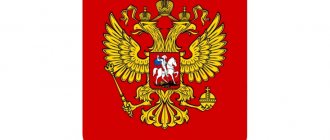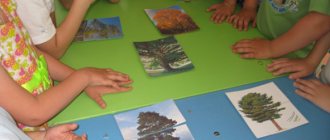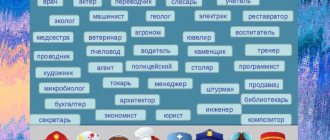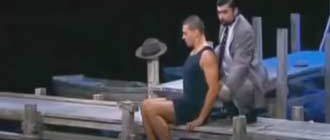All children are interested in things that, due to their age, are still unknown to them. The theme of space is one of my favorites. Sometimes, “trickle-down” questions confuse parents. I would like to answer, but simple words are not enough, because what excites a small inquisitive mind also excites the minds of the best scientists around the world. What should I do? Where can we find the “correct” and accessible explanations for complex phenomena? In the RIGHT books! We introduce you to a cosmic selection that will certainly help you find answers to “cosmic” questions.
tlum.ru
Studying space is interesting at any age. Stories about the Universe help children feel like they are part of a huge world, broaden their horizons and show creativity. For adults, knowledge about space teaches them to think globally and makes them think about ecology and responsibility for our planet. Books about space are interesting to read together to discuss, find answers to questions, fantasize and dream. Welcome to an exciting intergalactic adventure through the pages of children's books!
IN AND. Tsvetkov “Starry sky. Galaxies, constellations, meteorites"
The popular scientific and practical encyclopedia will tell young readers about the ancient science of astronomy, teach them how to “read” a star map, and introduce them to the names of the brightest stars.
Readers will learn where to look for the “heart of a lion” and “Beronica’s hair,” what the “great summer triangle” is, what connects the word “vacation” and the brightest star in the sky - Sirius. Where are observatories built and why the room where the telescope is located cannot be heated, how Stonehenge helps you find out the cardinal directions, where is the best place to observe the stars and much more.
Hard cover, high-quality printing, many photographs and drawings, diagrams. The text is adapted for independent reading by school-age children; the information can be trusted, because The reviewer was Doctor of Physical and Mathematical Sciences, Professor.
Encyclopedia for the curious “Why and Why”. Translation from English by T. Pokidaeva
This book has a section on time and seasons. Important concepts are explained clearly and in accessible words. The book is intended for reading by adults to children, it can be used for preschoolers.
Why does the sun rise and set? Why is it dark at night? What is a leap year and why do we need a calendar? What time is it in space?
The great advantages are high-quality illustrations, good paper and binding.
O. I. Sumatokhina “Space. 3D encyclopedia"
What invisible secrets does the cosmos hide?
The encyclopedia will help young children discover the Universe, meet famous astronauts, understand how a telescope works and what space stations are needed for.
3D imaging technology (glasses) will help bring the unknown closer.
The book contains a large number of photographs, the text is presented in small blocks.
Great Children's Encyclopedia Translation from English by T. Pokidaeva
Any quick question from a child’s lips will not sound scary, because this encyclopedia has everything to answer what the Universe and the Milky Way are, how many stars are in the sky and why they twinkle, which stars can explode and whether the Sun will die. Part of the book is dedicated to space.
The book is not overloaded with texts that are difficult for a child to understand; the illustrations are bright and clearly demonstrate phenomena that can be difficult to explain in accessible language.
Questions for a fairy tale about space for the development of a child’s emotional intelligence:
- What emotions did Katya experience when she saw a lonely star in the sky?
- Why did the girl want to see space?
- How did Katya react when she saw that the star was not alone?
- What did the girl like most about space?
- What would you say to the star if you were in space?
Yulia Lavrenchenko
Mother of a daughter and son. Creator of unique therapeutic tales. I write fairy tales to order. I create with love and for the joy of children!
Source
Space and earth. A unique illustrated encyclopedia for children
knigamir.com
With the help of this book, children will make an exciting journey to different parts of the world on our planet; They will visit the mountains, walk through cities and plains, and even fly into space! By reading the book "Space and Earth", they will learn how to observe the night sky, use binoculars and a telescope, and how an astrological observatory works. Tips from experienced travelers will help you learn to read maps and build routes, navigate the terrain, use a compass and notice the clues of nature. Suitable for children of primary school age.
“Space - a book with windows” (series “Life on Earth”)
Publishing house "Eksmodetstvo"
A cardboard book with windows - a hundred questions about space and astronauts, from simple to rather tricky: who is an astronomer, did a meteorite hit a person, what makes the Earth special, what is the ISS and Roscosmos (!). It’s clear that you won’t be able to get a serious understanding of the planets and the life of astronauts on the ISS from a book, but you can get acquainted and become interested. And in one of the windows you can... smell what the Moon smells like.
Buy
G. N. Elkin “For children about space and astronauts”
www.ozon.ru
The book introduces you to the wonderful world of space. Written in accessible language and well illustrated. It will be useful for children, their parents and teachers working with children.
The young reader will learn what stars and black holes are, where comets and asteroids come from, what cosmic dust is made of, what galaxies and constellations are, what the planets and their satellites are called, how the solar system works, who invented rockets, spacecraft and how they work cosmodromes. The author talks about astronauts and their heroic profession, who was the first to fly into space and how people visited the Moon.
"History of space. My First Book About the Universe, Katherine Barr, Steve Williams
Publishing house "Samokat"
The main impression from Williams and Barr’s book for little explorers is that space is very, very beautiful! There is not much text in the book, and perhaps not all of it will be understandable to kids: “The particles of this cloud combined into tiny objects - atoms, from these atoms dust and gas were formed. The gas was compressed and swirled. The compression made him hotter and hotter. Finally, it became so hot that it began to glow,” however, for this case, at the end of the book, readers will find a dictionary of useful words.
I want to look at the book again and again, admiring the huge stars, black holes, constellations and planets together with the little cosmonauts drawn. And the main conclusion - there is so much more out there that we can explore - we find it very inspiring!
Buy
Martin Root "Cosmos" (Clever Publishing, 2016)
mamsila.ru
This book will be understandable and interesting even for children 3-4 years old; it may well become the first encyclopedia about space in your children's library. The author talks in an accessible way about the planets of the solar system, the Sun, the Moon, stars and galaxies.
You can play with the book: the pages have opening flaps that little explorers love to look under. By opening such a valve, children will see what is inside the spacesuit, how the rocket works, and what the Earth is made of.
"Space Tales. Solar System", Elena Uleva
Publishing house "Clover"
A small book for the youngest researchers (and those who are still confused about which planet is located behind which from the Sun). Elena Ulyanova tells information about the Solar System as a fairy tale about the good Sun, who is ready to share its warmth “with the planets.” “Mercury arrived first - the smallest, but the fastest. - Sun! Sun! Warm me up quickly! I like warmth. How I froze in distant black space! - Of course, baby! Hide under my side! - Sunny tells him. Mercury flew up to him and began to spin around. He doesn’t leave a single step...” After Mercury appears... that’s right, Venus, and then the Earth pulled up and let’s warm one side, then the other, alternate day and night.
In the same series for kids there was a fairy tale about the Moon and the Earth, where the satellite is like a sad baby looking for its mother.
Buy
Efrem Levitan “To kids about stars and planets” (“Rosman”)
mamsila.ru
This book is a bestseller that has collected a huge number of rave reviews; its author is Efim Devitan, a famous popularizer of astronomy. Perfect for children aged 4 years and older to explore space for the first time.
This astronomical tale tells kids about the Universe in an accessible and fun way. Visual illustrations and simple experiments help parents explain complex phenomena using simple examples.
Trilogy by Efrem Levitan “Fairytale Universe” (“Meshcheryakov Publishing House”)
mamsila.ru
The trilogy includes the books: “Secrets of Our Sun”, “The Kingdom of the Sun”, “The World in which the Stars Live”.
The main characters are the author's own children - Alka and Sveta, as well as the gnomes Knopkin and Nedouchkin. Every evening, dad tells the children fairy tales about space, about how our Universe works, about the Sun, the Moon, what gravity is, what planets of the solar system exist. Material that is difficult for children to understand is presented in an accessible and engaging way. The experiments that dad conducts with children on the pages of books can be repeated at home with the child.
Text of the book “Exploring Space. Encyclopedia for children in fairy tales"
Elena Uleva Studying space. Encyclopedia for kids in fairy tales
© Uleva E., text, 2019
© Nesterova P., illus, 2019
© Phoenix LLC, design, 2019
⁂
From the author
Do you want to learn about space, get acquainted with celestial bodies and take an amazing journey through the Universe? Then let's go! Together with the brave little meteoroid, we go in search of his mother planet, from which he once broke away. Along the way, we will encounter various celestial bodies, extraordinary secrets and amazing space adventures. We will solve the mystery of the black hole, learn the stories of each of the planets in the solar system, and look into distant galaxies. You will find out what interesting things happened in space and how to become an astronaut.
Previously, man was not familiar with space. I looked at the starry sky and thought: “What is there? How does it all work? Or maybe the Earth stands on three whales, and they splash in the sea?
More likely!" But human curiosity knows no bounds. He began to observe, invent various instruments and realized that the world is not as simple as it seems, that space is very complex, and the Universe is huge. That stars are not small lights, they are huge. That there are distant unexplored planets.
What if creatures like us live there? I wish I could make friends with them! Man began to invent flying machines: a balloon, an airship, an airplane. I got to the rocket and flew into space. But even this is not enough for him! It sends fast rockets to other planets in the solar system. And even beyond! How many interesting things people have learned about space! And he will learn even more. Space exploration continues. Would you like to fly with us? Then let's go!
Let's meet our hero
One day a small meteoroid appeared out of nowhere.
- Where I am? Who am I? - he asked.
But no one answered him, since he was all alone in dark, cold space.
- This will not work! - the meteoroid decided. – We need to figure this all out.
And then he noticed the light.
“Where there is light, there is warmth,” he thought, “where there is light, everything is visible.”
And he immediately went there. The light became brighter. And finally the meteoroid saw a huge hot ball in front of it.
- Don't come near me! - he warned. - Otherwise you might get burned! I am the hot and big Sun. There is hot gas inside me, which is why there is so much heat from me.
- And who am I? – the meteoroid asked in fear.
- You are a meteoroid! - announced the Sun. - A fragment of the planet. If you fall on any celestial object, you will become a meteorite. That's what I'll call you!
– I want to find my home! Your mother planet. She's sad without me! – the meteoroid almost cried.
- It’s not easy to find her. The universe is huge! There will be many dangers on your way! - said the Sun.
– I’ll fly anyway! – Meteorite firmly promised.
- Wait a minute! At least I'll tell you what awaits you!
What is the Universe?
– To find your mother planet, you may have to fly around the entire Universe.
– How long will I fly?
- Perhaps forever.
- How is this eternal? – Meteorite was surprised.
– The Universe has no end.
- How is it that there is no end? Is this black, cold space all the time?
- Well, why only space? It contains various celestial bodies. Do you see the stars sparkling? These are glowing hot balls. Sometimes they are simply huge.
- How huge are they? – Meteorite laughed. “Just tiny sparkly dots!”
– They are tiny because they are far away. You remember that the Universe is huge, right? If you fly close to such a star, you will burn! Be careful! There are also planets in space - balls that do not glow. Very small planets are called asteroids.
– And among them is my mother?
- Certainly. And over there, do you see a ball with a tail flying? This is a comet. Its core is made of ice, dust and stones. If you encounter one, you will crumble into pieces and turn into meteorite dust.
- I don’t want to fall into dust! - Meteorite cried. - How can I save myself if everyone is rushing here and there?
“Nobody is rushing around,” explained the Sun. – Everyone moves in their orbits, planets and comets around their star. Only you, meteoroids, fly along your path because someone pushed you or broke you off.
- Wow! – Meteorite was surprised. – It turns out that you have order in the Universe! And I thought - everyone flies wherever they want!
The universe is infinite. It contains various celestial bodies: stars - burning and luminous bodies, planets - spherical bodies that move around a star, asteroids - small bodies, comets - bodies consisting of a core and a tail, meteorites - fragments of planets or asteroids that fell on the surface of a large celestial object.
Big Bang
- Well, are you ready to go on a trip? – asked the Sun.
“I’m still afraid,” admitted Meteorite, “you completely scared me: so many dangers!” What if someone chases me? So what will I do then?
- Nobody will give chase! Everyone walks in circles along their intended path - in orbits. And then, why should they offend you? You are all relatives!
- How are your relatives?
- Yes. Once upon a time, there were no celestial bodies. There was only complete darkness, and in it there was a very small hot object with a very high density.
And suddenly it began to rapidly expand, and its particles scattered in all directions. Then they cooled down, connected with each other, but since then they have been flying like that. This is how our Universe came into being. Don't be afraid, this is your home, and there are many people like you here.
The universe came into being as a result of the Big Bang. The dense, hot object expanded and its particles scattered in all directions. The particles gradually cooled down, connected with each other, but continue to move in the Universe.
Why are there spots on the Sun?
And then the Meteorite noticed that the Sun had a spot on its side, and another one behind it.
“It’s a mess,” he thought, “it’s probably dirty.” It must be said, otherwise it will continue to be dirty. Everyone will laugh.
And planets and stars."
“Sunny,” he said, “do you know that you have spots?”
- Where? – the Sun turned around. - Oh, behind? Yes of course I know. It's not from dirt, don't be afraid. It’s my magnetic fluxes coming out. The plasma is shifted. Yes, they can be large – up to one hundred thousand kilometers. But then they disappear, just as they appeared. A few months will come and go. People used to think the spots on me were moving. And this is because I am spinning around myself.
“And I was worried that it wasn’t too even,” thought Meteorite. “If there are even spots on the Sun, why should I worry?”
There are spots on the Sun that arise due to the fact that magnetic fluxes emerge in these places.
What is a meteorite?
The meteorite said goodbye to the Sun and hit the road.
And then he met a meteoroid just like himself.
- Hello my friend! – he greeted.
-What kind of friend am I to you? - he was offended. “You are a stone meteoroid, and I am an iron one.” There are also, of course, iron-stone ones, but I don’t communicate with them either. And in general, you will become a meteorite when you start falling on some planet and enter its atmosphere. In the meantime, you are a meteoroid. Where are you flying?
“I’m looking for my mother planet,” said Meteorite. - And where are you going?
- But I have more important things to do. I'm flying to Earth. How I'll jump from above! I want them to make some kind of tool out of me!
-What other weapon?
- Well, before people didn’t know how to smelt metal. They found fragments of meteorites and made axes, knives, and arrowheads from them.
- Wow! How interesting! - Meteorite exclaimed.
“I would take you too, of course.” But if a lot of meteors fall, it becomes a meteor shower. And this can be dangerous.
Meteoroids can be stony, iron, or stony-iron. These can be grains of sand and multi-meter blocks. Most meteoroids do not reach the Earth's surface, burning up in dense layers of the atmosphere.
What is the Solar System?
And then Meteorite remembered:
“Where should I go? I didn’t ask Sunny for directions. Maybe to the right? Or maybe to the left? Where is my mother planet? – he thought sadly.
“I knew that you would get lost,” the Sun nodded his huge head, “but don’t be afraid.” First you must check all the planets in my solar system.
– What kind of system is this? – Meteorite did not understand.
– The system is like a family. I am, of course, the main thing. Everything revolves around me: planets with their satellites, asteroids, comets. Everyone obeys me, doesn’t run away, moves around me in their orbits, and I warm them. I love them all. Do you know what their names are? Mercury, Venus, Earth, Mars, Jupiter, Saturn, Uranus and Neptune. And I am a star. Together we are the solar system. Go to my youngest - Mercury. Moreover, he lives not far from me. Suddenly you broke away from him?
The solar system is the Sun and the surrounding planets that move around it: Mercury, Venus, Earth, Mars, Jupiter, Saturn, Uranus, Neptune.
Mercury
Mercury was indeed close to the Sun, and therefore the flight to it did not take long.
- Hello, Mercury! – Meteorite greeted kindly as soon as he approached the small yellow-red ball. It was dangerous to fly even closer - he remembered the warning from the Sun, and it was hot on Mercury, because it got very hot.
-What do you want, Meteorite? - asked Mercury. - Speak quickly - I'm in a hurry!
- Where?
- Spin around the Sun. This is my job. But I do it very quickly, not like the other planets.
- Tell me, did a piece break off from you?
– Where else should I go? I am already the smallest planet in the solar system. I'm spinning and spinning. I turn one side to the Sun - it’s warm, but the other is cold!
- So you revolve around yourself? Come on, turn around!
- Turn around! I know you! You meteoroids are trying to fall on me. Look, the whole back is covered in craters. It hurts!
- I’m not going to fall on you! - Meteorite objected.
- Well, fly out of here then.
- Well, I’ll fly.
Mercury is the smallest, fastest, brightest planet in the solar system. It is closest to the Sun. Named after the fleet-footed god Mercury.
Venus
The next planet to which the Meteorite went was Venus. She also felt terrible heat.
- Venus! Hello! - Meteorite began. - Tell me, have you lost your fragment?
- What? – Venus was scared. – A piece fell off of me, and I didn’t even notice? I look good!
– Don’t worry, dear Venus! You look really good.
- That's the same! After all, I am the most beautiful planet in the solar system. I was named after the goddess of beauty.
- You are very beautiful! – Meteorite assured her. “You have clouds and thunderstorms sparkling on all sides.”
- Yes. But instead of rain I have sulfuric acid.
She can dissolve anything, even diamond. So it's better not to meddle with me. Sulfuric acid is very harmful.
I don’t spin around, I don’t fuss like some people. I’ll turn around myself in almost two years.
“Yes, for a long time,” Meteorite sighed, “I’d better clothe you myself.”
Unfortunately, he did not find a place where a piece could break off.
Venus is the second planet from the Sun. Due to its proximity to the Sun, it is very hot. There are often thunderstorms, but instead of rain, sulfuric acid pours.
Earth
The next planet was blue.
- I know your name! - said Meteorite. - Earth!
The sun told me about you. You are the third planet from the Sun.
“Didn’t it tell you anything else?” These are all other planets that are lifeless. And on me there are animals, plants, people! Do you know how much care they take?
– Why is there no life on other planets, but you have it?
– It’s not too hot on me, but not too cold either.
There is air in my atmosphere. And on the surface there is water.
“Yes, you really have a lot of worries,” Meteorite sympathized. “And since you’re busy, I won’t distract you.”
I’d better fly back later and take a closer look at you next time.
Earth is the third planet from the Sun. Its uniqueness is that there is life on it, there is water, air and normal temperature for the existence of living organisms.
Mars
- Who is that moving towards me? - Meteorite heard a menacing voice when he approached the next planet - Mars.
- I, Meteorite. I'm looking for my mother. I want to see if a piece has broken off from you.
- What? - Mars got angry. “Do you think someone could get close to me, hit me and defeat me?” You know that I was named after the god of war, Mars? My color is red, like the color of blood. And all because there is iron on my surface.
- Or maybe there are people? Or animals? – Meteorite asked. – You’re so close to Earth, you even look alike...
– There is water on my surface – blocks of ice. The highest volcano in the solar system, called Olympus.
What about people? Even if they appeared, they would die immediately: due to the low pressure, the oxygen in their blood would immediately turn into gas bubbles. I also have the strongest dust storms, the strongest radiation, from which all living things die.
“He’s too warlike,” thought Meteorite. “And there are no traces of fragments on its surface.”
The meteorite said goodbye to Mars and moved on.
Mars is the fourth planet from the Sun. The planet is red because it contains iron. There is very strong radiation on the planet, capable of destroying all life.
Jupiter
I found the Jupiter Meteorite very quickly, because it was so big - it was hard not to notice.
- Hello, Jupiter! – Meteorite greeted him.
- How do you address me? – the important Jupiter was indignant. – We must say “Your Majesty”!
- Why?
- I'm the biggest! I am the fastest - I can turn around myself in 10 hours. I have the most children - companions who revolve around me. I am the richest, only it rains diamonds. I weigh twice as much as all the planets combined! And I was named after the most important god!
“You know what, Jupiter,” said Meteorite bravely, “it seems to me that the most important thing is the Sun.” After all, all the planets revolve around him. And also the main Earth, because there is life on it. And you quickly turn around yourself, but you go around the Sun in 12 years! And Mercury is only 88 days away. Well, who is the fastest then? I think you're just bragging. But in reality you are made of gas and liquid.
Of course, after such words, Jupiter turned away offended, because it is not customary to talk to royalty like that.
Jupiter is the fifth planet from the Sun. It is the largest and heaviest. Consists of gas and liquid. A day on Jupiter passes in 10 hours, and a year lasts 12 Earth years. Jupiter has 69 satellites that orbit around it.
Saturn
“Maybe Saturn will be friendlier?” – thought Meteorite. The planet turned out to be very unusual: there were such beautiful rings spinning around it that the Meteorite had never seen before.
- Do you like it? – asked Saturn. – It’s very fashionable now to have a lot of rings. Mine are made of ice and dust. My rings are also decorated with satellites. There are 62 of them. Slightly less than Jupiter.
“I like it very much,” admitted Meteorite. – Did a piece break off from you? I'm looking for my mother planet.
– I am made of gases, I don’t even have a solid surface. What can I break off? I'm already very light. Do you know that I change my outfit with every season? I also spin so much that it’s always windy on me. Well, did you like my outfit? Only honestly?
- Very! – Meteorite answered enthusiastically.
And the Meteorite went further, to the next planet of the solar system - Uranus.
Saturn is the sixth planet from the Sun. She has rings of ice and dust. It consists of gas, so it has a very low density. Saturn changes its color with the changing seasons. It has 62 satellites. There are very strong winds on the planet.
Uranus
- What do you want? They didn’t give me beautiful rings, they didn’t make me big ones. They don't warm enough! There has been no light at my poles for 42 years! They stuck me on the outskirts of the solar system!
The meteorite thought that Uranus was very offended by the Sun. “He is so far away. That’s probably why he’s so cold and angry!”
- Yes, I'm angry! - Uranus responded, as if he heard the thoughts of the Meteorite. “They made my heart out of stone, the rest was ice, and then they pushed me so hard with some celestial body that they turned me over on my side.” So I'm spinning on my side. What should I be? They are still surprised! What do you want, why did you come?
– Tell me, dear Uranus, after you were pushed by something, didn’t some piece break off from you? Otherwise I fly and fly, I don’t know where my parents are.
“If another piece had been broken off from me, I would have flown off to another galaxy!” - said Uranus. - I’ll go create a storm or something.
- Well, don’t worry so much, Uncle Uranus! No need to be so angry!
Feeling that Uranus had calmed down, the Meteorite moved on to the next planet - Neptune.
Uranus is the seventh planet from the Sun. It consists of stone and ice. A year lasts 84 earth years, a day lasts 17 hours. Uranus has 27 moons and 13 rings.
Neptune
But finding Neptune was not so easy. It seemed to our Meteorite that he was lost.
“Where to look for him? - he thought. - You can’t see anything. The sun is far away."
And suddenly he heard right under his nose:
- Don't push!
- Who is this? - he asked in the darkness.
- It's me, Neptune. I was named after the god of the underwater kingdom. He also sat in the darkness at the bottom and did not want to communicate with anyone. I was discovered by accident. At first they took him for a star. Then they calculated mathematically that I was a planet.
– How do you live without the Sun? – asked Meteorite.
- I'm an ice planet. If I get closer to the Sun, I will melt.
They call me the blue giant. A year on my planet lasts 165 Earth years. And the day is 16 hours. I have five rings, and 14 satellites. The largest is Triton. Someday he'll crash into me.
“Didn’t a piece break off from you?” – Meteorite asked. – I’m just looking for my home planet.
- Well, judge for yourself: I am an ice planet, you are made of stone.
How can I be your family?
- How could I not have guessed it right away! How smart you are! – Meteorite was surprised.
Neptune is the eighth planet from the Sun. Made of ice. It is called the blue giant. It has 14 satellites, five rings. A day lasts 16 hours, and a year lasts 165 Earth years.
Pluto
The meteorite moved on, but it turned out that the solar system had already ended.
“That means all the planets are over,” Meteorite sighed.
- And I? Pluto! – the planet was indignant.
-Are you a planet too?
- Yes... well, more precisely, I was her. And then suddenly they said that I was not a planet!
How so? I'm spinning around the sun.
I have an atmosphere. I even have satellites! Why am I worse than Neptune? He is named after the underwater king, I am named after the underground one. I, too, am made of stone and ice. Yes, I fly around the Sun in 248 years, because it is far away, but after all, I turn around myself in six days.
“You’re just very small...” said Meteorite.
“Yes,” Pluto sighed, “no one saw me.” But Clyde Tombaugh looked through his telescope and saw. I was declared a planet. And then they took it and canceled their decision.
Listen, you fly everywhere. Fly and tell them there to make me a planet again.
The meteorite flew back, because he promised Pluto that he would figure everything out.
Pluto is a dwarf planet. Since 2006, it is no longer considered one of the main planets of the Solar System. Composed of rock and ice, it has five satellites.
Why is Pluto no longer a planet?
The meteorite went to Earth. After all, it was there that Pluto was discovered and declared a planet. When he told this story to Earth, it immediately explained everything: “You see, science is developing, now people have very good telescopes, and they see much more than they saw before.” And so they saw that several more planets were moving in the same orbit with Pluto: Makemake, Haumea, Eris, as well as objects such as Orcus, Sedna, Quaoar, Varuna. They are all made of rock and ice. And some are even larger than Pluto. So, should we announce that there are 14 planets in the solar system? Or exclude Pluto from the list? - So Pluto knew that he was not alone in orbit, and he deceived me? – Meteorite was upset. “He really wanted to become a planet again,” Earth began to justify him, “I understand him.” He is already accustomed to being the ninth planet of the solar system. But being a dwarf planet is also good. Space is big. There is a place for everyone in it. “Yes, big,” Meteorite sighed, “too big.” And I’ll probably have to look for my mother for a very long time.
The Kuiper Belt is a set of objects that move in the same orbit: Makemake, Haumea, Eris, Orcus, Sedna, Quaoar, Varuna. They are all like Pluto, all made of rock and ice.
What was the Earth like before?
“Still, it’s a shame for Pluto,” Meteorite sighed.
- It's not his fault. This is how he appeared. It wasn’t easy for me either,” said Earth, “because I wasn’t like I am now either.”
-What were you like?
– At first I was a cloud of gas and dust. It appeared after the Big Bang. The particles in it moved and compressed.
I was red-hot then, I took various substances from space, attracted them and grew. Then the denser metals went inward, and the lighter metals - silicates - outward. This is how the core - my heart - and the cortex - my skin appeared. The gases that periodically came out formed an atmosphere - my lungs. A little later, water appeared in the atmosphere - my blood. Under the crust there is a mantle - a solid layer, but the core is made of molten iron. Sometimes, if cracks appear in the bark, hot liquid - lava, as well as ash and gas burst out. This is how volcanoes appear.
What did you think? I can also get angry and release ash and lava.
The earth emerged from a gas and dust cloud. Liquid hot metals went in, and light silicates went out. The core and crust of the Earth appeared. The gases that came to the surface formed the atmosphere. Some of them turned into water.
Dominic Wolliman, Ben Newman “Professor Astrocat and his adventures in space” (“MYTH”, 2016)
mamsila.ru
The main character of the book, Professor Astrocat, shares his knowledge, observations and discoveries with readers. The book is illustrated with humor and is equally interesting to read for both children and adults.
It turns out that Astrocat really existed and was even really preparing to go into space, but... escaped at the last moment! The prototype for the hero of the book was Felix the cat. Instead of Felix, the cat Felicette flew into space, but the story is not about her at all...
mamsila.ru
The authors of the book turned out to be a very funny story. There are also funny astro mice, so that the cat doesn’t get bored wandering around the expanses of space alone. Comic book style design is a good technique. Some of the information is presented on behalf of the characters in the book; periodically they exchange funny remarks.
mamsila.ru
Very detailed and visual illustrations, as well as infographics, help ensure that information is easily perceived and remembered quickly. The relationship between the sizes of the planets in the solar system, for example, is illustrated with the help of various fruits: if Jupiter were the size of a watermelon, then Uranus would be an apple, Venus would be a grape, and Mercury would be a peppercorn.
Having such a book in your home library is simply a blessing!
“A journey into space. Amazing facts about the solar system, Peter Ekberg, Anders Nyberg
Publishing house "Walk into History"
A book for those who are interested not in astronauts, but in other planets. Some of the pages are comics, and some are texts, and quite large ones at that. Professor Astro and his friends, children Jack and Uni, set off on a spaceship "from the wreckage". However, the heroes in the book are present mainly to greet and enthusiastically applaud the planets.
There is a separate spread about each planet, a lot of scientific text, the facts chosen are interesting, but for an already prepared reader (or get ready to help, parents). “The air on Venus is very thick, so the atmospheric pressure there is high all the time. Once on this planet, a person would feel as if he were on Earth at a depth of 800 meters below sea level. It also rains caustic sulfuric acid on Venus! Venus rotates around its axis very slowly—it takes as many as 243 Earth days to complete one rotation! At the same time, it moves in orbit even faster than the Earth: Venus’ revolution around the Sun, that is, a year, is 225 Earth days.”
Having seen enough of the amazing planets, the heroes return to Earth and remind readers that home is the best place in the universe.
Buy
E. Kachur “Fascinating astronomy”
www.babyblog.ru
A beautiful, bright and educational book from a series of encyclopedias with Chevostik. Together with the inquisitive hero, little readers will go to the observatory to see planets, stars, comets and much more through the telescope.
Why does the Moon sometimes look like a sickle, and sometimes even round? How to distinguish a planet from a star? What is a light year and why is one Earth year equal to four Mercury years? Which planet is the smallest and which is the largest? Do stars appear during the day? Why is the comet tailed? What is orbit and satellite, meteors and eclipse? You will find answers to these and other questions in the book. Simple texts, cute illustrations, detailed diagrams and experiments will help readers fall in love with space.
“A Tale of Happiness” from skazzzki.ru
You can order an interesting personalized fairy tale for your child through the skazzzki.ru service.
“The Tale of Happiness” is a personalized (the name of the child and parents are personalized) adventure book for children from 5 to 11 years old. A modern fairy tale for fans of fantasy and adventure, the main character will be transported to a distant planet ruled by real bandits. The main character, driven by ambition and a keen sense of justice, comes to the defense of the oppressed people and leads the uprising. The book has beautiful modern illustrations and many memorable characters.









